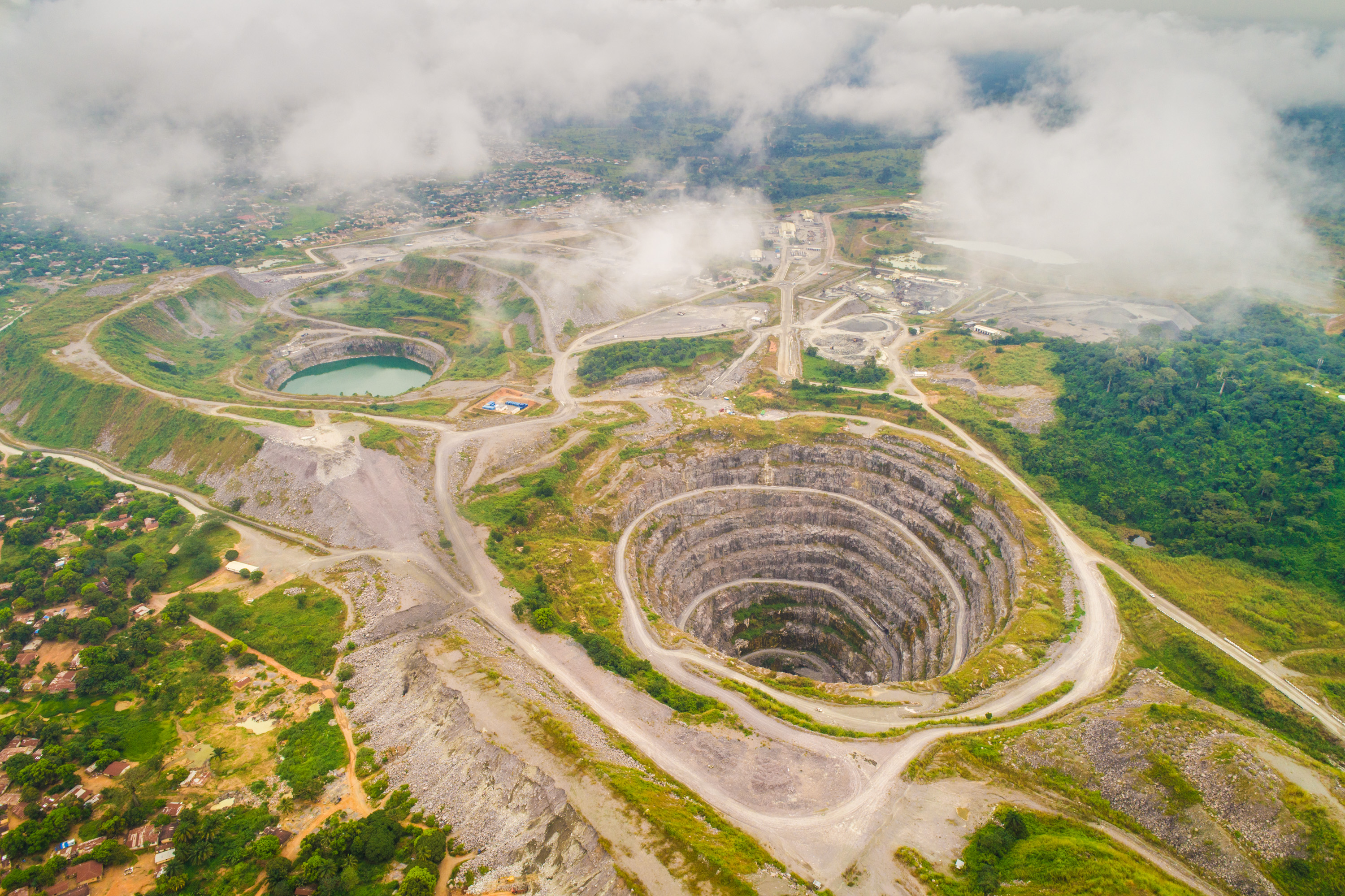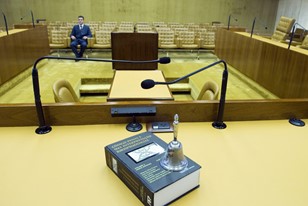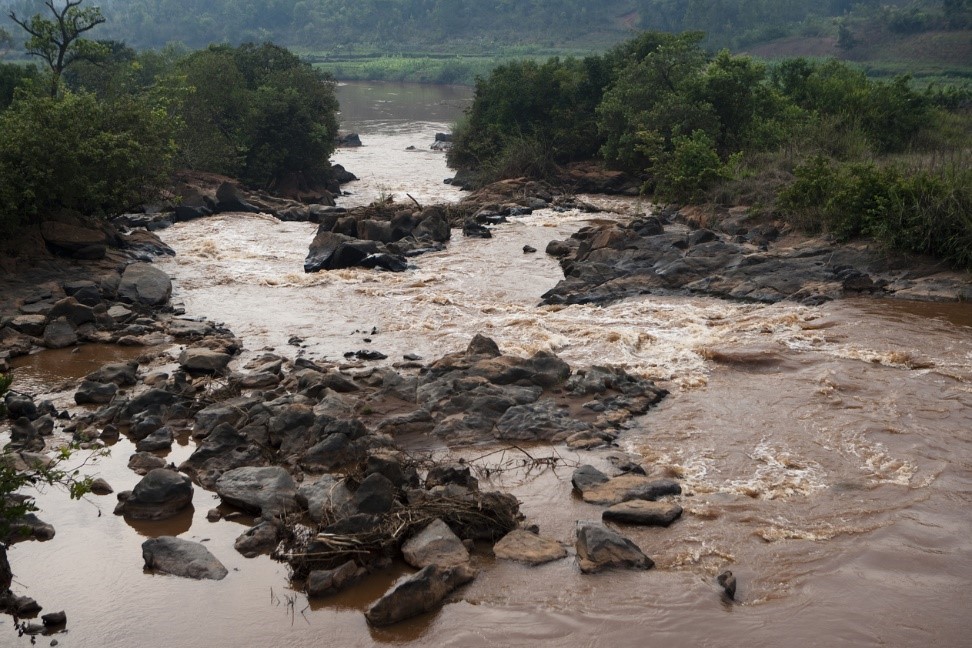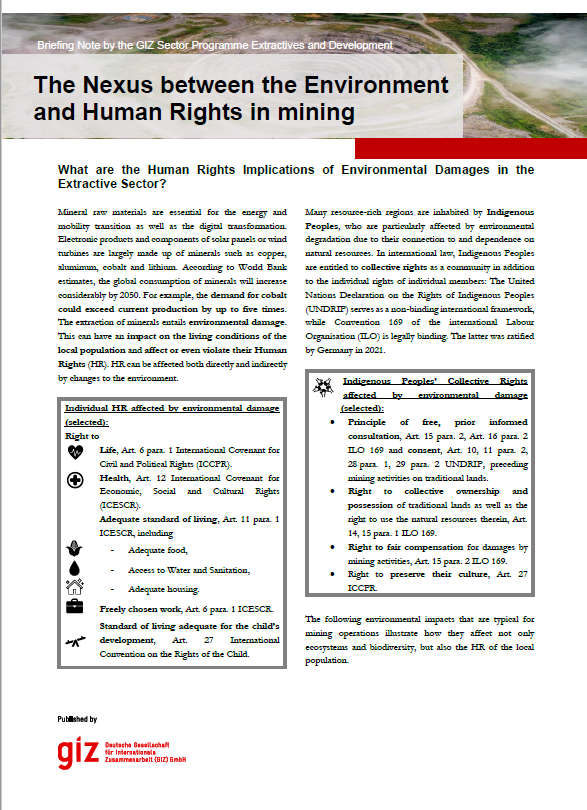Copyright© GIZ/Michael Duff
20.07.2022 New Briefing Note on the Nexus between the Environment and Human Rights in Mining
Environmental damages and human rights
An examination of global supply and value chains for mineral raw materials shows the close link between human rights and the environment. Along mineral supply chains, both risks to human rights such as child labour as well as environmental damages such as greenhouse gas emissions, biodiversity loss or deforestation occur. However, beyond its impact on the environment and the climate, environmental degradation often leads to human rights violations of local populations. These violations can be caused directly by environmental degradation, both temporally and legally – e.g. skin irritation after contact with contaminated water. However, many environmental impacts affect the population only after years or indirectly, e.g. the contamination of drinking water can make it unusable for agriculture and thus threaten the livelihoods of the local population.
Protection of human rights: state duty to protect or corporate responsibility?
Primarily, states are obliged to respect, protect and fulfil the human rights of their population. However, in the globalised world with cross border trade and transnationally active corporations, comprehensive human rights protection requires looking beyond this relationship between a state and its citizens. Increasingly, states are creating regulatory frameworks to protect their citizens from violations by third parties, such as corporations.
Liability of internationally operating companies for human rights violations in court
In principle, victims of human rights violations perpetrated by a company should be able to obtain legal protection at the local courts via a claim for damages. However, claims against international mining companies at the local courts because of human rights violations can prove to be difficult: There may be a lack of national regulations on damages, lack of knowledge on the parts of rightsholders, short limitation periods or difficulties in providing evidence. To ensure that victims of human rights violations have access to remedies, the possibility of suing multinational companies at their headquarters has been discussed in international law for years. Under private international law these lawsuits are already possible, but under difficult conditions. For example, in European courts, the law of the place of the damage, i.e. the mining country where the violation took place, is decisive.
An example is the case against TÜV Süd at the district court Munich I: The Brazilian community of Brumadinho and roughly 1.100 affected people are suing TÜV Süd for damages – under Brazilian law - because its Brazilian subsidiary had certified the dam of a tailings pond for toxic mine sludge as safe, shortly before the dam broke in January 2019. The mudslide following the rupture of the dam killed 270 people, devastated the community of Brumadinho and destroyed the ecosystem around the River Paraopeba. The court held an oral hearing in September 2021, but as a result of an expansion of the plaintiffs in early 2022, the date of the delivery of the judgement has been postponed.
Another example of corporate liability in industrialised countries is the case of Lungowe v Vedanta Resources (External link), which was heard in the English courts 2015-2019. Residents near a mine operated by a subsidiary of the British Group Vedanta Resources Plc had sued the parent company for damages for the pollution of watercourses and the resulting damage to their health and loss of income. In 2019, the Supreme Court declared that the English courts had jurisdiction, even though Zambian tort law was applicable. The main argument for English jurisdiction according to the Supreme Court was that affected parties in Zambia had not had access to effective legal protection due to a lack of sufficient financial resources. Following the decision, Vedanta agreed to a settlement, avoiding a decision on the merits.
Increasing regulation on corporate due diligence along global supply chains
In addition to liability under private international law, since 2010 there have been various efforts to establish corporate due diligence along supply chains: Beyond various voluntary regulatory frameworks, industrialised countries increasingly create legally binding supply chain laws to oblige companies based in the respective states to respect human rights, even further along the supply chain. Initially, these laws were limited to specific issues, such as the Dodd-Frank-Act (External link) in the USA, which focuses on the financing of violent conflicts in the Great Lakes Region of Africa through trade in tin, tungsten, coltan and gold. Recently, these regulations are becoming increasingly comprehensive and, in addition to human rights due diligence, progressively also include environmental standards, such as the German Act on Corporate Due Diligence in Supply Chains (so-called Supply Chain Act, LkSG), which will enter into force on 01.01.2023. In this law, environmental due diligence obligations can be divided into two categories: Firstly, the duties can refer to specific environmental impairments which lead to selected human rights violations (cf. § 2 para. 2 no. 9 DEU LkSG). Secondly, there are independent environment-related duties (cf. § 2 para. 3 nos. 1-8 DEU LkSG).
The draft of an EU Directive on corporate due diligence (EU Corporate Sustainability Due Diligence Directive (External link)) includes a civil liability provision modelled on the French supply chain law (loi de vigilance (External link)). Under certain conditions, this allows victims along the supply chain of those environmental and human rights violations covered by the law to sue for damages at the companies’ headquarters, if the impairments could have been prevented by the company.
Overall, for a sustainable impact of supply chain legislation, it is necessary that all actors – companies, governments of mining countries and right holders – participate in the supply chain control process.
A human right to a healthy environment?
In addition to corporate due diligence, environmental protection – and thus the protection of human rights – could receive a boost by another development: As a healthy environment is a perquisite for many human rights, there is a growing discussion about establishing a human right to a clean, healthy and sustainable environment. Such a right to a healthy environment has been recognised in several regional human rights treaties and is now discussed at the international level: In October 2021, the United Nations Human Rights Council adopted a resolution recognising the right to a safe, clean, healthy and sustainable environment. While resolutions of the Human Rights Council are not binding, but instead only political declarations of intent, the council has referred the topic to the United Nations General Assembly, proposing a decision in this body before the end of 2022. The General Assembly Resolutions do not create legally binding obligations either, however, such a resolution does carry substantial political weight. As with the 2010 recognition of the right to water, a recognition of the right to a healthy environment could lead to increased governmental commitment to protect against environmental degradation and willingness to provide funding and resources to implement such a right.
Learn more about the correlation between environmental impacts and human rights in mining in our new briefing note!
If you have any questions, please contact Rosalie Seppelt (External link).



